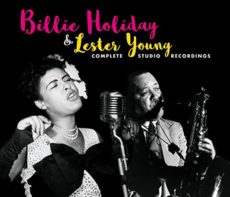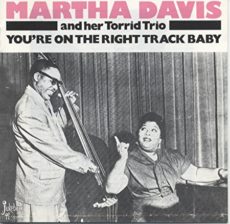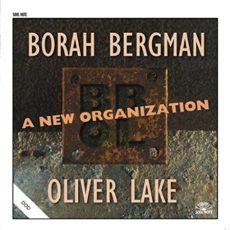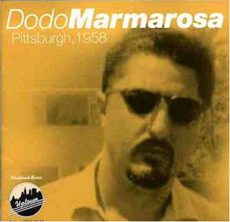
Daily Dose Of Jazz…
John Hammond Sr. was born into a wealthy family on December 15, 1910 in New York City. Educated at Yale, he had a great love for Black music and as early as 1933, at 22, he was active in the music business, discovering Billie Holiday and getting her into the recording studio, producing Bessie Smith’s final sessions, and becoming a friend of young Benny Goodman. One of swing music’s greatest propagandists, he was responsible for at least partly discovering a remarkable list of musicians through the years making their rise to fame much more swift.
Hammond was a masterful talent scout, producer, promoter, and an early fighter against racism, he produced freewheeling American jazz sessions for the European market, worked with Fletcher Henderson and Benny Carter, and encouraged Goodman to form his first big band. In 1935 he teamed Lady Day with pianist Teddy Wilson for a series of recordings, and the following year he discovered Count Basie’s orchestra while randomly scanning the radio dial. He then flew to Kansas City, encouraged Basie to come East and in 1938 and 1939 he organized the famous “Spirituals to Swing” all-star Carnegie Hall concerts.
After hearing about Charlie Christian in 1939, he flew out to Oklahoma City, Oklahoma to listen to the young guitarist and flew him to Los Angeles, California where he had set up an audition for an initially reluctant Goodman. In addition to his work as a promoter and a record producer, most notably for Columbia during 1937-1943, John was a jazz critic.
After World War II military service felt misplaced in the jazz scene of the mid-’40s, never gaining a taste for bebop. However, by the Fifties he produced a superior series of mainstream dates for Vanguard featuring swing era veterans. Hammond worked through the years for Keynote, Majestic, and Mercury, and during 1959-1975 he was again a major force at Columbia, where he helped the careers of Bob Dylan, Aretha Franklin, George Benson, Bruce Springsteen, and Adam Makowicz, among others.
1967 saw him organizing a new “Spirituals to Swing” concert, and in 1977 his autobiography John Hammond on Record was published. Producer, promoter, critic and talent scout John Hammond Sr. passed away on July 10, 1987 in New York City.
More Posts: critic,producer,promoter,talent scout

The Jazz Voyager
Heading across the country to the Northwest coast to Seattle, Washington where this Jazz Voyager will be sitting in Tula’s Restaurant and Jazz Club at 2214 2nd Avenue, to catch the 7:30 pm Saturday performance of the vibraphonist Susan Pascal and her Quartet. Joining her are pianist Bill Anschell, bassist Chuck Deardorf and drummer John Bishop for a cover charge of $20.00.
Tula’s presents live jazz seven days a week, has table seating outdoors though the city enjoys 300 days of rain a year. If you make your dinner reservations for Northwest and American cuisine at 206-443-4221 before 7pm on Friday or Saturday, you’ll get $5 off your cover. Packed my umbrella because it’s possible that it will rain while I am there since they experience some 300 days of rain! #wannabewhereyouare
More Posts: adventure,club,genius,jazz,museum,music,preserving,restaurant,travel,voyager

Daily Dose Of Jazz…
Martha Davis was born on December 14, 1917 in Wichita, Kansas, and was raised in Chicago, Illinois. By the mid-1930s, she had met and been influenced by Fats Waller, and performed regularly as a singer and pianist in Chicago clubs. In 1939, she met, and later married, bassist Calvin Ponder, who went on to play in Earl Hines’ band.
In 1948, Davis moved to California, and developed her recording career on Jewel Records in Hollywood with a trio including Ponder, guitarist Ralph Williams and drummer Lee Young. Their cover of Dick Haymes’ pop hit Little White Lies followed by a duet with Louis Jordan, Daddy-O in 1948, reached # 11 and #7, respectively, on the Billboard charts.
Davis and Ponder also began performing together on stage, developing a musical and comedy routine as “Martha Davis & Spouse” which played on their physical characteristics, she was large, he was smaller. The act became hugely popular, touring and having a residency at the Blue Angel in New York City. They appeared together in movies including Smart Politics with Gene Krupa, and in the mid-Fifties, variety films Rhythm & Blues Revue, Rock ‘n’ Roll Revue and Basin Street Revue. Several of their performances were filmed by Snader Telescriptions for video jukeboxes, and they also broadcast on network TV, particularly Garry Moore’s CBS show.
In 1957, after a break of several years, they resumed recording for the ABC Paramount label, with whom they cut two LPs. Singer and pianist Martha Davis passed away from cancer in New York on April 6, 1960 at age 42.

Daily Dose Of Jazz…
Borah Bergman was born on December 13, 1926 in Brooklyn, New York to Russian-Jewish immigrant parents. He began took piano lessons as a child and then changed to clarinet, before returning to piano after being discharged from the army. As an adult, he developed his left hand playing to the point where he became essentially ambidextrous as a pianist, and could play equally fast in both hands.
Bergman cited Earl Hines, Bud Powell, Lennie Tristano, Ornette Coleman chamber music, Bach and Dixieland as formative influences, due to the contrapuntally and polyphonically play.
Until the 1970s Borah played little in public, concentrating on private practice and his work as a school teacher. He recorded four albums as a soloist, most notably on the European label Soul Note, before embarking on duo and trio albums beginning in the 1990s. A small number of solo and quartet albums were also released from the middle of the decade.
Free jazz pianist Borah Bergman passed away on October 18, 2012.
More Posts: piano

Daily Dose Of Jazz…
Dodo Marmarosa was born Michael Marmarosa on December 12, 1925 in Pittsburgh, Pennsylvania and received the uncomplimentary nickname Dodo as a child because of his large head, short body, and bird-like nose. He began taking piano lessons at the age of 9, receiving classical music lessons, but was influenced by the jazz playing of Art Tatum, Teddy Wilson, and others after fellow pianist Erroll Garner, four years his elder, introduced him to their music. Attending Peabody High School, he practiced a lot, until his left and right hands were equally strong.
Beginning his professional career in 1941 by joining the Johnny “Scat” Davis orchestra at the age of 15, he followed this stint with Gene Krupa around the end of 1942. After Krupa’s orchestra broke up he played in Ted Fio Rito’s band then moved to Charlie Barnet’s big band. He recorded debut was with Barnet in 1943 with “The Moose”, on which the 17-year-old pianist played, combining bebop and Count Basie-style minimalism. Marmarosa recorded some trio tracks with Krupa and DeFranco in 1944. He then worked with Tommy Dorsey and appeared in the MGM film Thrill of a Romance. After Dorsey he joined Artie Shaw’s big and small bands.
From the early 1940s Dodo had searched for and experimented with advanced progressive forms of jazz and became attracted to bebop after meeting and jamming with Dizzy Gillespie and Charlie Parker. In 1945 Marmarosa moved to Los Angeles, California and played piano on Parker’s first recordings for Dial Records. For the next two years he recorded extensively as a sideman in both bebop and swing contexts with Wardell Gray, Lionel Hampton, Mel Tormé, Willie Smith, Lester Young, and, became the house pianist for Atomic Records, Slim Gaillard and Barney Kessel.
Making his first recordings as leader in 1946, with trio tracks that included Ray Brown on bass and Jackie Mills on drums, and in a quartet with adding saxophonist Lucky Thompson, he also recorded his only vocal track, I’ve Got News for You, in the same year. He would go on to lead the first pizzicato jazz cello sessions for Dial with Harry Babasin on cello and Jackie Mills on drums.
The Fifties were not particularly productive, suffering from psychological problems and his family getting him no help, his behavior became erratic with him disappearing for weeks at a time. He recorded an Argo Records trio session in 1962 released as Dodo’s Back!, and made his final studio recordings that same year with saxophonist Gene Ammons and another with trumpeter Bill Hardman. His last public performance was contributed to his diabetes somewhere between the late Sixties to early to mid Seventies, leading to his permanent retirement.
Living in obscurity for the rest of his life, pianist, composer and arranger Dodo Marmarosa, who played in the bebop, modern, progressive and swing genres, passed away of a heart attack on September 17, 2002, in a veterans’ hospital in his hometown of Pittsburgh.
More Posts: piano






